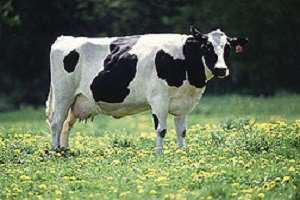By Dennis O'Brien
Wisconsin dairy producers are increasingly adopting a practice that makes economic and environmental sense: They plant oats in early to mid-August and either allow cattle to graze them through late November or harvest the crop in early November for later use. The strategy allows production of an additional forage crop before winter. The oats also "scavenge" excess nitrogen from the soil, and the plant residues enrich the soil.

Dairy producers, however, need guidance on when to allow their cattle to start grazing the fall oats and which oat cultivars to use. If they allow cattle to graze forage too early, the heifers quickly eat up whatever is available and get less forage than if the oats were given more time to grow. Putting the heifers out to graze later in the fall means running the risk of inclement weather and losing oats under snow cover.
Agricultural Research Service (ARS) dairy scientist Wayne Coblentz and his colleagues at the U.S. Dairy Forage Research Center planted two types of oat cultivars (an early- and a late-maturing variety) in August and put dairy heifers out to graze for six hours a day at two different starting dates: in late September and mid-October.
Click here to see more...